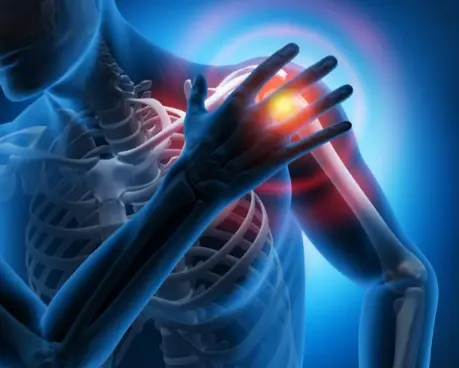What Is a Rotator Cuff Tear?
The rotator cuff is a group of four muscles and their tendons that surround the shoulder joint. These structures work together to stabilize the shoulder and allow for controlled lifting, rotating, and reaching motions. A rotator cuff tear refers to a disruption in one or more of these tendons, either from injury or degeneration. The tear may be partial (where the tendon is damaged but not fully severed) or full-thickness (where the tendon is completely torn).
Tears are most commonly seen in the supraspinatus tendon, though any of the four tendons (supraspinatus, infraspinatus, subscapularis, teres minor) can be affected.
Causes and Risk Factors
Rotator cuff tears can result from:
-
Acute injury (e.g., lifting something heavy, falling on an outstretched arm)
-
Repetitive overhead activity (common in athletes and laborers)
-
Degenerative wear and tear over time, especially in people over age 40
Additional risk factors include:
-
Smoking
-
Poor posture or scapular mechanics
-
Weak shoulder stabilizer muscles
-
Family history of rotator cuff problems
Symptoms
-
Pain in the shoulder, especially at night or when lying on the affected side
-
Weakness with overhead movements or lifting
-
Limited range of motion
-
Clicking or cracking sensation during motion
-
Difficulty reaching behind the back
-
In more severe cases, inability to lift the arm without assistance
Diagnosis
-
Physical examination with strength and motion testing
-
X-rays to assess bone alignment and rule out arthritis
-
MRI or ultrasound to visualize the extent and location of the tendon tear
-
Special tests (e.g., Drop Arm Test, Empty Can Test) performed during exam
Treatment
Non-Surgical Treatment
-
Activity modification to avoid aggravating movements
-
NSAIDs to reduce inflammation and pain
-
Physical therapy to strengthen surrounding muscles and improve shoulder mechanics
-
Corticosteroid injections may be considered for temporary pain relief
Many partial tears and degenerative full-thickness tears can be managed successfully without surgery, especially in older or less active individuals.
Surgical Treatment
-
Recommended for:
-
Acute full-thickness tears in younger or active patients
-
Tears causing significant weakness or loss of function
-
Failure of conservative treatment over 3–6 months
-
-
Arthroscopic rotator cuff repair:
-
Minimally invasive
-
Uses sutures and anchors to reattach torn tendons
-
-
In some cases, tendon transfers or shoulder replacement may be necessary for massive, irreparable tears
Recovery Outlook
-
Non-surgical recovery may take 3 to 6 months with structured rehab
-
Post-surgical recovery:
-
Sling immobilization for several weeks
-
Physical therapy begins soon after to restore range of motion
-
Strengthening starts after healing phase
-
Full return to activity typically takes 4 to 6 months, depending on the severity of the tear and healing response
-
Why Kerlan Jobe Institute?
The shoulder specialists at Kerlan Jobe Institute are nationally recognized for their expertise in rotator cuff repair and rehabilitation. Whether through conservative management or advanced arthroscopic surgery, our team provides personalized care to help each patient regain strength, motion, and confidence in their shoulder.

